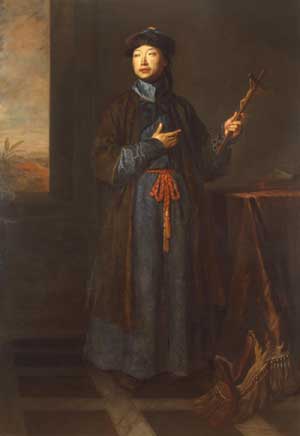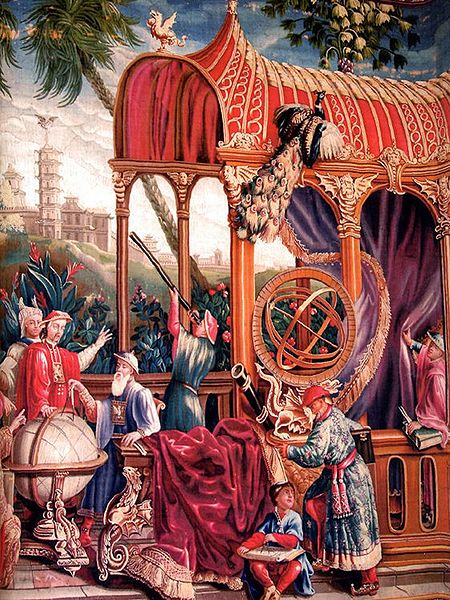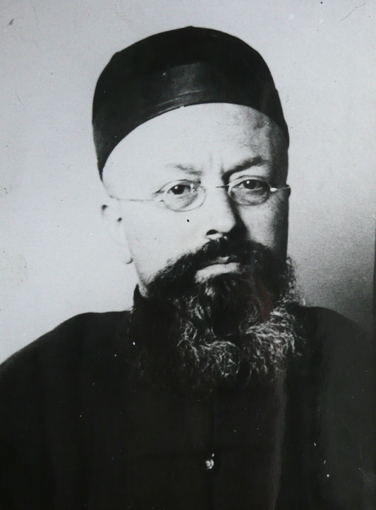Part I
Ancient Christians
The introduction of Christianity into China has been ascribed not only to the Apostle of India, St. Thomas, but also to St. Bartholomew. In the third century, Arnobius, in “Adversus Gentes”, speaks of the Seres, with the Persians and the Medes, as among the nations reached by “that new power which has arisen from the works done by the Lord and his Apostles”. Though there is evidence that Christianity existed in Mesopotamia and Persia during the fourth century, as evidenced by the persecutions which began in 345 under Sapor (309-379), there is no proof that it spread to China. After the condemnation of Nestorius, Patriarch of Constantinople, at the Council of Ephesus (431) and his banishment, his disciples spread his errors through Asia. They seemed to have reached China in the seventh century, according to the Si-ngan-fu inscription. In should be added that, according to Ebedjesus, some thought that Archæus, Archbishop of Selucia, had created a metropolitan see in China in 411, while others said that the metropolitans of China dated only from Saliba Zacha, patriarch of the Nestorians from 714 to 728. According to Pauthier, the T’ang Emperor, Hiuan T’sung issued in 745 an edict wherein it was stated that the temples of the religion from Ta Ta’in being known popularly as Persian temples, it was ordered that, this being inaccurate, thenceforth the latter name should be changed to Ta Ts’in temples.
Si-ngan-fu Inscription
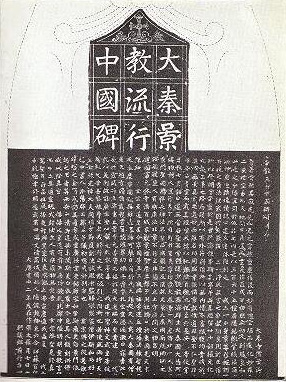
The Nestorian Stone, with the inscription: “Monument commemorating the introduction and propagation of the noble law of Ta T’sin in the Middle Kingdom.”
In the year 1625 the Jesuits in Peking were informed that a slab referring to the Christian religion had been found not long before, possibly in 1623, at Ch’ang-ngan (Si-ngan-fu). Father Nicolas Trigault was sent to inspect the stone, which had been discovered at Cheu-che, some distance from Ch’ang-ngan. It was one of the monuments called by the Chinese antiquaries pei. The French traveller, Grenard, who visited Si-ngan-fu a few years ago gives the following measurements: height, 7 ft., 9 ins., width 2 ft. 9 ins., thickness 10 ins. At the top a cross is incised, under which nine large characters in three columns for the heading, which reads as follows: Monument commemorating the introduction and propagation of the noble law of Ta T’sin in the Middle Kingdom. According to the text of the inscription, Olopen arrived from Ta T’sin at Ch’ang-ngan in the ninth year of the period Chang-kwan (635); Emperor T’ai Tsung sent his minster, Duke Fang Huan-ling, to receive him and conduct him to the palace; the Scriptures were translated, and the Emperor, becoming convinced of the correctness and truth of Olopen’s religion, gave special orders for its propagation, and in the seventh month of the twelfth year of Chang-kwan (638), in the autumn, issued a proclamation: a Ta T’sin monastery was built, etc. The conclusion of the inscription runs as follows: Erected in the second year of the period Kien-chung (781) of the great T’ang dynasty, the year star being in Tso-yo, on the seventh day of the first month, being Sunday. The inscription consists of 1780 characters; in addition to the Chinese characters, at the foot and on the sides, the stele also exhibits a series of data in the Syriac language, in Estrangelo characters. Sir Henry Yule (Marco Polo, II, 27) thinks that Olopen is only a Chinese form of rabban, a monk, while Prof. Hirth makes Olopen stand for Ruben, or Rupen. It appears from a paper by J. Takakusu (Ts’ung-pao, VII, 589-591) that Adam (King-tsing) who erected the monument under Te-tsung, under the same emperor, translated, with a Buddhist, a Buddhist Sûtrç, the “Satpâramitâ”, from a Hu text.
The question of the authenticity of the inscription has been formerly often raised, but to-day no one can doubt the genuineness of this most important document for the history of the propagation of the Faith in the Far East; we fully agree with A. Wylie, who writes: If the Nestorian tablet can be proved a forgery, there are few existing memorials of bygone dynasties which can withstand the same type of arguments. This inscription is generally considered as emanating from Nestorians; but this is supported only by circumstantial evidence, for it must be remarked that nothing in it is characteristic of Nestorianism.
Nestorians
The Nestorians were successful in converting the Keraits to Christianity at the beginning of the eleventh century, as related by the Christian historian, Bar Hebræus. The Keraits remained Christians till the time of Jenghiz Khan, as is attested by Rashiduddin; Their head is spoken of by Rubruck and Marco Polo as Ung Khan (Wang Khan), identified with Prester John; when Wang Khan was defeated by Jenghiz, his niece, Sorhabyani, married Tuli, the fourth son of the conqueror, and became the mother of Kublai. When Kublai removed his capital to Peking, he founded in 1280 the chief Christian consistory, under the name of Ch’ung-fu-tze; the priests of the Nestorian sect were known as Erkeun (Ye-li Ko-wen). but this term was later applied to Christians in general, who were called by the Mohammedans Tersa (transcribed Tie-sie). The last name, however, disappeared with the removal of the capital to Peking. Mar Sergius, a Nestorian, and other Christians are mentioned in a description of Chin-kiang-fu. The Nestorians had a number of bishoprics throughout Asia and two archbishoprics, one at Cambalue (Peking), one at Tangut (Tanchet); there is even a record of a Chinese Nestorian, Mar Jabalaha (b. 1245), a pupil of another Nestorian, Rabban Sauma (b. in Peking), being appointed Patriarch of Persia when Denha died, though he was unacquainted with the Syriac tongue. This is a proof of the influence of the Mongols of China. Buddhism, however, prevailed at court, and two of the Nestorian churches were converted to heathen temples. The prosperity of the Nestorians in China continued through the Mongol period. We may judge their numbers and influence by the fact that friar Oderic, about 1324, found three Nestorian churches in the city of Yang-chou, but soon afterwards they fell into decay. Evidence of their existence was found by the Jesuits at the beginning of the seventeenth century.
Medieval Catholic Missions
The great religious crusade in Asia during the thirteenth and fourteenth centuries dates from the Council of Lyons held in 1245 by Pope Innocent IV. The interests of Christendom were threatened by the Mongolian conquest, and it became necessary to send ambassadors to the Tatar chief to find out his intentions. Two mendicant orders, the Franciscans and the Dominicans, who had been instituted at the beginning of the thirteenth century, were ready to furnish the agents for the mission. John of Plano Carpini, a Franciscan, accompanied by Friar Stephen of Bohemia, left Lyons on 16 April, 1245, and was joined at Breslau by Friar Benedict, a Pole. They went by way of Moscow and Kieff, and in February, 1246, reached the camp of Batu, grandson of Jenghiz, on the Volga; thence they went to Karakorum to the to the court of Kuyuk Khan. On 13 November they began their return voyage with the Mongol chief’s reply to the papal letter and reached Avignon in 1247. As a reward, Carpini was appointed Archbishop of Antivari. Four Dominican friars, Anselm of Lombardy, Simon of Saint-Quentin, Alberic, and Alexander, joined at Toflis by Andrew of Longjumeau and Guichard of Cremona, were sent on a mission to the Mongol general, Baïju, in Persia, but were received badly, and dismissed on 25 July, 1245, with a haughty letter for the pope. St. Louis, King of France, sent the Franciscan, William of Rubruck (known as Rubruquis), to the court of Mangu Khan, successor of Kuyuk; he returned to his convent at Acre (1255), were he wrote an account of his voyage. Speaking of Carpini and Rubruck, Yule says (Cathay, I, p. CXXIII): These were the first, so far as I know, to bring to western Europe the revived knowledge of a great and civilized nation lying in the extreme east upon the shores of the ocean. To this kingdom they gave the name, now first heard in Europe, of Cathay. Though the first missionaries went sent to the court of Kublai by Nicholas III (1277-80), the real founder of the mission of Cambalue was John of Montecorvino, a Franciscan friar (b. at Salerno, 1247), sent by Nicholas IV. Giovanni probably reached the Mongol capital before the death of the Great Khan. In 1307 Clement V sent seven friars having the rank of bishop, who were to consecrate Montecorvino as Archbishop of Cambalue and Primate of the Far East; only Andrew of Perugia, Gerard, and Peregrinus reached China in 1308 and consecrated Montecorvino; a bishopric was erected at Zaitun in Fu-kien, which was occupied in turn by Gerard (d. 1313), Peregrinus (d. 1322), and Andrew of Perugia; Montecorvino died in 1333 and was succeeded by Nicholas, a Paris theologian, who arrived in China with twenty-six friars and six lay brothers. A mission was also created at Ili-baluc in Central Asia with Richard of Burgundy as its bishop, but it was destroyed. In 1362 the fifth bishop of Zaitun, James of Florence, was massacred. In 1370, William of Prato, professor of the University of Paris, was appointed to the See of Peking. An apostolic legate, Francisco di Podio, with twelve companions, was sent out in 1371, but they were never heard from; all the Christian missions disappeared in the turmoil which followed the fall of the Mongols and the accession of the Ming dynasty (1368).
Modern Missions
If the Dominican friar, Gaspar da Cruz, was actually the first modern missionary to China, where, however, he stayed but a short time, the Jesuits under Matteo Ricci were the first to give a solid basis to the missions in the Celestial Empire. They spread through the Kwang-tung province to the central provinces, Nan-king, Shanghai, Hang-chou, endeavoring to reach Peking. In 1602 the Jesuit, Benedict de Goæs, started from Agra in an attempt to reach Peking by land. He arrived at the frontier town of Su-chou, where he died, 18 March, 1606, from the fatigue of his long journey. The Jesuits soon found eager competitors in the Dominicans and the Franciscans, who arrived in 1633, but where expelled from China four years later.
In August, 1635, Li, Prefect of Kiang-chou, issued a proclamation which was in reality an apology for the Christian religion, praising Kao (Father Alfonso Vagnoni, b. in the Diocese of Turin, 1566; d. at Kiang-chou, 19 April, 1640). In July, 1641, Tsuo, Sub-prefect of Kien-ning-hien in Fu-kien mentions Aleni as a master eminent among the learned men of the West, and speaks in high terms of the Christian religion. The conquest of China by the Manchus (1644) was a cause of great suffering to the Church. The celebrated Jesuit, Johann Adam Schall von Bell, head of the Board of Mathematics, was thrown into prison, but he soon regained favor under the first Manchu emperor, Shun-che. In 1664, during the minority of K’ang-hi, Yang Kwei-sien, a Mohammedan astronomer, in charge of the Board of Mathematics, accused Schall, then old and paralyzed, of hostility to Chinese traditions, and obtained against him a sentence of death (15 April, 1665), which was not carried out; when K’ang-hi took the power in hand, the errors of Yang were discovered, thanks to the Belgian Father, Ferdinand Verbiest, who was appointed in Yang’s place head of the Board of Mathematics. It was Verbiest and not Schall who cast the astronomical instruments of the Peking observatory, some of which date from the Mongol period. The arrival of the priests of the Missions Etrangères of Paris and of the the French Jesuits sent by Louis XIV to Peking gave a new emphasis to the Christian missions.
In March, 1692, Ku Pa-tai, President of the Board of Rites and some of his colleagues addressed to the emperor a note to the effect that as the Europeans were not guilty of any breach of the law, it seemed unfair to prohibit their religion; that it would be proper therefore to let churches subsist and to allow persons bearing perfumes and other offerings freedom to enter them. An imperial decree approved of this note, and copies were sent to all the provincial governors. The Jesuits, as astronomers or interpreters, were in high favor at court and the question of rites which was disadvantageous to other missionaries, did not impair their credit during the reign of K’ang-hi. Matters were different under Yung Cheng, son and successor of K’ang-hi, who in 1724 issued an edict exiling to Canton all missionaries except those occupying various offices at Court; in 1736, an edict of K’ien Lung, son and successor of Yung Cheng, prohibited the teaching of Christian doctrine under penalty of death. On 25 June, 1746, a cruel persecution broke out in Fu-kien, during which the vicar Apostolic, Bishop Sanz, and four other Spanish Dominicans, Serrano, Alcobar, Royo, and Diaz were martyred. The Jesuits Attimis and Henriquez were put to death at Su-chou on 12 Sept., 1748. A great change was made in the Christian Church at Peking, the Jesuits being replaced by the Lazarists.
During the Kia K’ing period (1796-1820), persecution was very severe. A decree was issued 4 Sept., 1811, prescribing a search for foreign preachers. There were but seven Europeans residing at Court, Ferreira (Fu Wen-kao); Riberio (Li Hung-chen); Serra (Kao Shéu-kien), all Portuguese Lazarists in charge of the observatory; Nan Mi-te, interpreter of the Privy Council; Cajetan Pires (Pei Ho-yuan), a mathematician, and two other missionaries too old to be sent home. Monsignor Dufresse, Bishop of Tabraca and vicar Apostolic of Sze-ch’wan, was beheaded 14 Sept., 1825; Father Clet, a French Lazarist. was strangled at Wu-ch’ang (Hu-pe), 18 Feb., 1820. On Sept. 11, 1840, Father Jean-Gabriel Perboyre, a Lazarist, was martyred at Wu-ch’ang. Brighter days were looked for after the signing of a treaty at Wham-poa (1844) by the French ambassador, Théodose de Lagrené, expectations which were fulfilled after the Peking convention of 1860.

Bishop St. Louis Gabriel Taurin Dufresse, beheaded on September 14, 1815. His head was attached to a pole and his body left exposed for three days as a warning to others. He was canonized on October 1, 2000.
In an edict of 20 Feb., 1846, Tao-kwang ordered that the establishments belonging formerly to Christians be restored to their owners, and that henceforward officers searching for and arresting harmless Christians should be tried. The edict was not sent to all the governors, and the same year the missionaries, Hue and Gabet, were arrested at Lhassa and the Franciscan Father Navarro in Hu-pe, and all were taken under escort to Canton and Macao; it was not till the war of 1860 that the churches of Peking were surrendered to Bishop Mouly. The murder of Auguste Chapdelaine (Missions Etrangères de Paris) at Si-lin-hien, in Kwang-si on 29 Feb., 1856, was the pretext chosen by France to join England in a military action against China. Special privileges were awarded to missions by Art. XIII of the French treaty of T’ien-tsin (1858) and Art. VI of the French Peking Convention (1860). The old churches of the capital were restored to the Lazarists, and passports for inland travel or sojourn issued to twenty-eight missionaries. Korea, already ill-famed on account of the massacre of Monsignor Imbert and Fathers Chastan and Maubant on 21 Sept., 1839, was the scene of a terrible persecution in 1866; Bishop Berneux, with Fathers de Bretenières, Beaulieu, and Dorie (8 March), Pourthié and Petitnicolas (11 March), the coadjutor Bishop Daveluy, and Fathers Aumaætre (30 March) were all decapitated. Of the flourishing establishment of the Missions Etrangères de Paris, there were only Fathers Ridel, later on vicar Apostolic, Féron, and Calais.
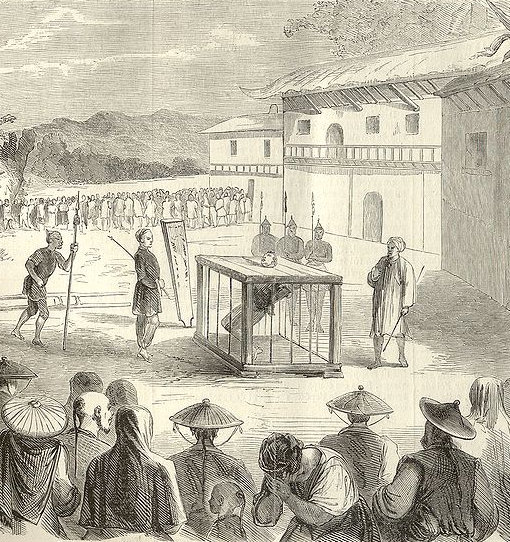
Drawing showing Fr. Auguste Chapdelaine’s marytyrdom. He was severely beaten and locked into a small iron cage, which was hung at the gate of the jail.
This led to an intervention of France in Korea which did not, however, achieve any great degree of success. Things were going from bad to worse in China. In Kwang-tung Fathers Verchère (1867), Dejean (1868), Delavay (1868), were persecuted; in Sze-ch’wan, Fathers Mabileau (29 Aug., 1865) and Rigaud (2 Jan., 1869) were murdered at Yeu-yang-chou, near Kwei-chou, and Fathers Gilles and Lebrun were ill-treated (1869-70); anti-foreign placards were posted up in Hu-nan (1869); the French minister, Count de Rochechouart, was nearly murdered at T’ai-yuan, in the Shan-si province (1869). Finally came the massacre of T’ien-tsin, 21 June, 1870. Fontanier. The French consul, Simon, his chancellor, Thomassin, the interpreter and his wife, the Lazarist father Chevier and the Cantonese priest Hu, Challemaison, a merchant and his wife, ten sisters of St. Vincent of Paul, Bassoff and Protopopoff, Russian merchants, and the wife of the latter—in all twenty-two persons were put to death with great barbarity.
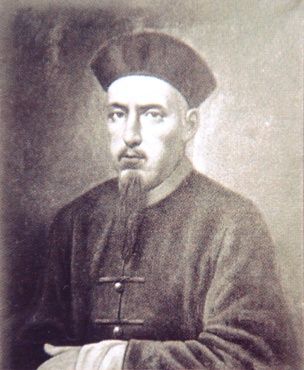
Saint Fr. Auguste Chapdelaine, was already dead when he was beheaded. He was canonized on October 1, 2000.
The Franco-Prussian War prevented France from taking any energetic action in China, but a special mission, headed by the High Commissioner, Ch’ung Hou, was sent to Paris to apologize. The lack of retaliation on the part of France encouraged Prince Kung to send the foreign ministers at Peking (1871) a memorandum relating to missions and regulations to be applied to Christian missionaries. This circular note met with a protest, not only from the French Minister Rochechouart (14 Nov. 1871), but also from Mr. Wade, British Minister. The murder of the German missionaries, Nies and Henle (1 Nov., 1897), in the Shang-tung province, led to the occupation of Kiao-chou by the Germans. On 14 Oct., 1898, Chanès was murdered at Pak-tung (Kwang-tung); Victorin Delbrouck, a Belgian, was killed in Hu-pe (11 Dec., 1898); satisfaction was given by the Chinese for these crimes, which had been perpetrated in the face of two imperial decrees that same year, dated 12 July and 6 October. The Boxer rebellion brought sad days for the missions. The list of martyrs is lengthy. The following bishops were put to death: Fatosati of Northern Hu-nan, Grassi and Fogolla of Shan-si, Italian Franciscans; Guillon, Missions Etrangères of Manchuria, Hamer (Dutch) of Kan-su (burnt to death), and the Franciscans, Ceseda and Joseph (Hu-nan); Facchini, Saccani, Balat, and Egide (Shan-si); Ebert (Hu-pe); the Jesuits, Andlauer, Isoré, Denn, and Mangin (Chi-li); the Lazarists d’Addosio, Garrigues, Doré, Chavanne (Peking); Emonet, Viaud, Agnius, Bayart, Bourgeois, Leray, le Guéval, Georjon, Souvignet, of Manchuria, all of the Missions Etrangères de Paris; Segers, Heirman, Mallet, Jaspers, Zylmans, Abbeloos, Dobbe, of Mongolia, all of the Congregation of Scheut.
Mention should be made of the fact that in 1895, the French Minister Gérard made an agreement with the Tsung-li Yamen that all passages in the official code disadvantageous to the Christian religion should be erased. The Berthemy Convention, finally settled by M. Gérard (spoken of below), and the reorganization of the protectorates and the hierarchy, treated of hereafter, are the chief events of the last few years.
[Part II]




